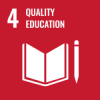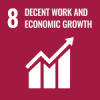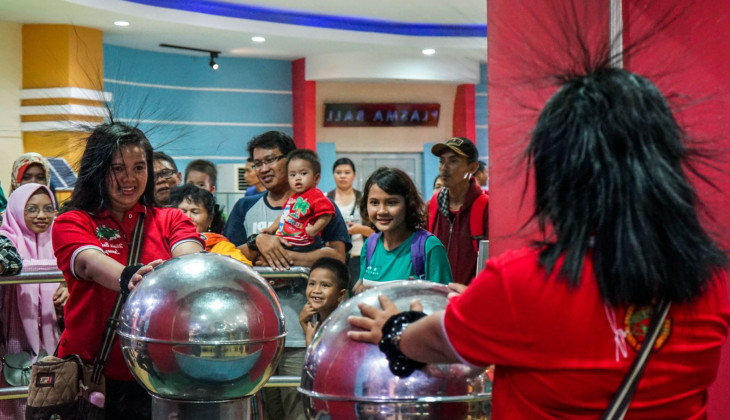The theme “Educational Tourism in Yogyakarta: Between Expectations and Reality” became an interesting theme as the series #7 agenda organized by the Masters / Doctoral Study Program of Tourism Studies, Postgraduate School, Universitas Gadjah Mada on Tuesday night (26/1). There were some speakers presented in the seminar. They were Dr. Ani Wijayanti, MM, MM. Par. CHE, as a lecturer at Bina Sarana Informatika University, alumni of S3 Tourism Studies at UGM Graduate School, and Prof. Kwartarini Wahyu Yuniarti, M.Med.Sc, Ph.D. and Dr. Dyah Mutiarin as a host.
Ani Wijayanti affirmed that the educational tourism theme in Yogyakarta was interesting. This theme was similar to her research topic when she took the doctoral program in Tourism Studies, UGM Graduate School. According to her, Yogyakarta has a rapid development of tourism, and it definitely can contribute a huge amount of regional income and spur the economy.
“Throughout this potential, educational tourism is very open to engaging in the development and has very good prospects,” she said.
She appraised that the current development of a very innovative learning model proffered educational tourism potential to develop. The indoor learning concepts that are only limited by buildings and insulated space have now changed.
The occurrence of this educational tour will surely be in big demand. Some parties have indeed implemented this educational tour model for a long time. This tour is known as a study tour, in which students regularly carry out the implementation.
“So, we should manage this educational tour properly throughout this tremendous potential. Once, I read an article regarding educational tourism that revealed tourist destinations in great demand were centralized in Jakarta and Bali, even if in the holiday, in DIY, there are crowds in tourist buses containing students. As a matter of fact, this condition reveals tremendous potential,” she said.
She also added that the form and type of tourism are always evolving. Now it is not only classical tourism, but there is also a phenomenon where a shift occurred in the form of tourism that provides a plus, namely, acquiring knowledge. Nowadays, tourists tend to aspire to go back to their homes with “memorable knowledge” to improve their quality of life.
“This is the basis for education-based tourism. Regrettably, in DIY, there has not been an available educational tourism management model. It has not been incorporated in the planning or regulations, either the DIY Regulation No 1 of 2012 – concerning the 2012-2025 RIPPARDA DIY, so the current management tends to be somehow trial and error. The results are also uncertain. Hence, it makes the development less optimal,” she explained.
Conducting research of educational tourism in Yogyakarta, the speaker observed four educational tourism destinations with different characters, namely Smart Park based on technology, Kraton Yogyakarta, based on culture, Fort Vredeburg is based on history, and Museum of Biology, which is based on learning subjects. The four of them are interesting, but most of them have not applied educational tourism concepts.
For instance, educational tours must provide experiences, and how tour packages should be designed to provide classes and fields. The goal is to link and match the material learning in class and its practice to the field so that tourists can get a thorough material study obtained.
According to Ani, to date, this preparation has not been properly formed. Many parties almost have never discussed the school needs and how they must manage tourist destinations.
“If there is a design on a tour package, educational tours are very interesting. There will be comprehensive children activities, reinforcing the knowledge they gained from the class. However, it seems that study tours tend to be very individual, although some students are also well-coordinated. Even Keraton’s guides say it is challenging to explain the material because sometimes they go somewhere independently. Yes, in the end, he gave up and only explained to those who stayed,” said Ani.
Ani suggested that it is better if there should be a briefing before conducting a study tour so that synergy would arise when they arrived at the location. Avoid children (tourists) from getting nothing because that is very unfortunate.
It is also necessary to have tutorials, concepts, and exploration so that when traveling on educational tours, they must take several stages. They should not go directly to tourist objects, look around, take selfies without understanding the contents of the tour destinations.
“Tutorials and exploration are necessary. The children are better to be given basic knowledge first. While there should also be an attractive and communicative tour guide so that students have an introductory understanding, they are welcomed to explore subsequently. Like the Vredeburg fort, there are dioramas so that if students don’t understand the plot and they would like to see what makes them interested, they won’t get anything,” she said.
Ani added that in educational tourism, there is a hidden curriculum. Therefore, it is necessary to have an interesting plot design in educational tours so that it will be beneficial to support the learning process in schools.
“If there is a proper design, it will become a hidden curriculum and become a specific subject. Good learning activities, a good education that promotes learning can provide high remembrance or memory to children. The memory of tourism education gives something very profound, so there will be shared-experiences with others,” she added.
As a respondent, Prof. Kwartarini also stated that traveling experiences could not be shared “as a whole” because there are particular cognitive, affective, and behavioral repertoires in experiences that absolutely differ from one tourist to another.
“Hence, managers must be able to provide uniqueness and memorable attractions for tourists. As a matter of fact, this endeavor should not be difficult considering Indonesia has 1,128 ethnic groups, 700 languages, and dialects spread across 17,405 islands,” she said.
Author: Agung Nugroho
Photo: Media Indonesia
Translator: Natasa A
Source: https://ugm.ac.id/id/berita/20682-wisata-edukasi-potensial-untuk-dikembangkan



